God of War Ghost of Sparta may be the very best game in the series, at least in my book. Ready at Dawn Studios poured everything they had into the game. Just as there was between GoW, and GoW II there was a noticeable bump in the graphics, textures, level designs, controls, magic, and million other details that went into any AAA game. It was hard to believe that it was originally created for the PSP. I don’t think any handheld system could handle such an amazing adventure. Thankfully it was ported to the Playstation 3 where it received an additional bump in visuals, and control. Ready at Dawn had a new director for this game, industry vet Dana Jan. He made sure the team delivered an experience that was as good as the work from David Jaffe, and Cory Barlog. This was the highest amount of praise I could give any GoW director. Rather than talk about it let me show you the reasons why I loved the title. Let’s start with some features.
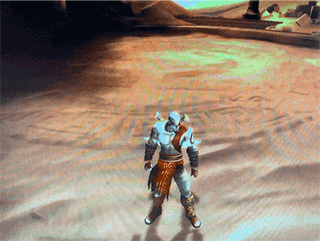
The game takes place after the events of the original God of War, but before the sequel. So Kratos is fighting with the Blades of Athena, rather than the Blades of Chaos. As with previous GoW games you do get a chance to earn an extra weapon. The second weapon is a spear, and shield, labeled the Arms of Sparta. These weapons belonged to Kratos before he became a god. His men took care of them while he was in Olympus, and presented them to Kratos when he returned home.
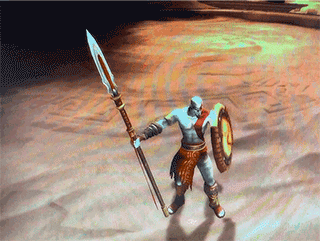
Kratos could use his god magic to create as many spears as he wanted in Ghost of Sparta. If you’ve played God of War Ragnarok you should recognize the spear with the red sash. Kratos could summon infinite ranged attacks with the Draupnir Spear. The ring it was forged from was magical, and could create infinite copies as well. I believe that the reason the weapon was introduced in the game was a direct nod to the PSP games. The Blades of Chaos were of course an homage to the first three games, the Leviathan Axe was the iconic weapon in the Norse saga, but the Draupnir Spear was in celebration of the Ready at Dawn prequels. Giving Kratos a ranged attack, that honored his Spartan history wasn’t the only amazing thing that Ghost of Sparta delivered.
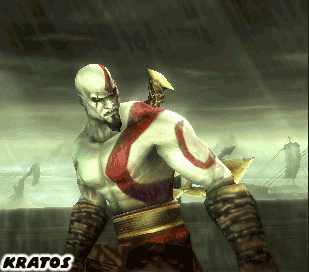
I mentioned previously in the blogs that the GoW series has always featured alternate costumes that you could unlock. The ones in this game may have been the absolute best. The Ghost of Sparta skin sapped a lot of color from Kratos, and made all of the cut scenes appear more dream like. The God Armor was the same armor that he sported at the beginning of GoW II. It was arguably one of his hardest looks. The Robotos costume was the comedy one, it made Kratos look as if he were a robot made of cardboard, vent tubes, and duct tape. The Deimos armor made him look like his brother. It certainly allowed us to wonder how the series would have looked like if their roles were reversed. Finally the Legionnaire Armor I would consider the best skin. It was a chance to see Kratos as he would have appeared as the exalted leader of the Spartan army, if not its king. When you combined the Legionnaire Armor with the Arms of Sparta it was far, and wide his best look. I couldn’t think of any armor combination in GoW Ragnarok that could compete.
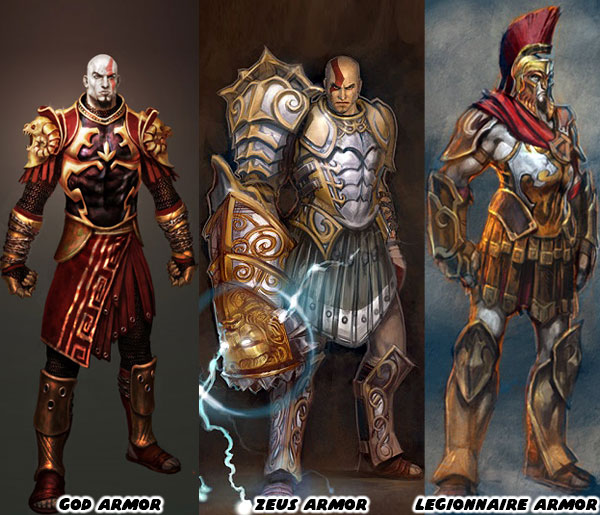
Many of the design choices featured in the game were actually based on earlier work from both Sony Santa Monica, and Ready at Dawn. This includes the story, locations, enemies, and encounters. In The Chains of Olympus the studio wanted to give Kratos a secret full armor skin that would compliment the Gauntlet of Zeus. Sadly they didn’t have time to create that model, and texture. They never forgot their plans, and created the Legionnaire Armor as a way of completing their vision. In my opinion the Spartan armor works better. There were many other things that went into the game that I want to explore with you.
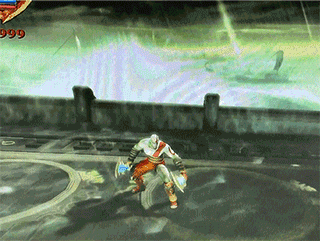
Let’s start with the beginning. As with all of the GoW titles we are right in the heart of the action. Kratos in on a ship in the middle of a raging storm. He is with a fleet of Spartans that is being attacked by sea monsters, and their ships are being boarded by the Triton Soldiers, mermen-like creatures sent by Poseidon. Right away we can tell that there is a considerable improvement in the graphics from the previous game. Not only that but from the moment the game starts until the very end the atmosphere in the game is in constant motion. There are storm clouds in the background. Lightning bolts, rain, smoke, fire, snow, and more elements are scattered around the environments. There is always movement on the screen which really helps bring the world to life.
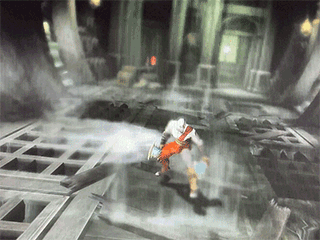
The water effects are some of the best I’ve ever seen for a Playstation 2 / PSP-era game. Whether it’s rain, a steady trickle, a waterfall, or splashes on the bow of the ship, the animations are really well done in the game. As Kratos, and his men fight off a series of weird giant crabs, and giant tentacles we suddenly come face to face with one of the legendary monsters of the deep, the Scylla. Those massive crabs are her offspring.
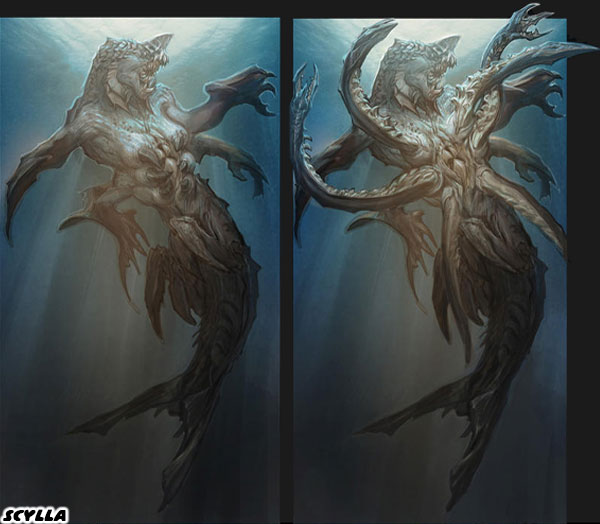
The Scylla was one of the monsters that appeared in the Odyssey, but also appeared to Jason, and the Argonauts as well. In the Mediterranean Sea there was a straight that the heroes had to navigate. One one side of the channel there was the Scylla, and on the other was the whirlpool causing monster known as the Charybdis. Sailors had to find a way to navigate between the two without losing their ship, or their lives.
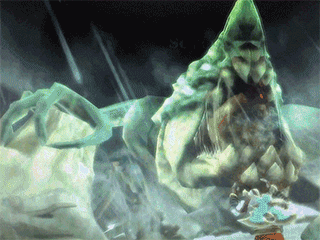
If you look at the pacing of the game series Kratos fights the Hydra, Basilisk, and Colossus of Rhodes at about the same time. Meaning this was going to be a long, and memorable adventure. Adding the Scylla had the mythology geek in me absolutely flipping out. I felt like a kid again watching the Clash of the Titans.

Kratos gets dragged to the shores of Atlantis, has to fight the monster, and her crab-like offspring the Scylla Brood. Kratos is able to injure the creature, and she runs away. Of course we all know that she would be making a reappearance somewhere down the line. Kratos scales the walls of Atlantis, and makes his way through the city. The Triton Soldiers are joined by sword throwing Triton Assassins, and their leaders the Triton Lords. They actually kill the peaceful Atlanteans, and fight the Atlantean soldiers while Kratos runs through the amazing locale.
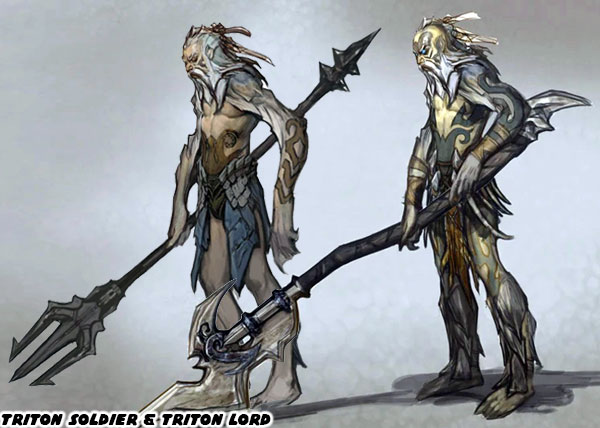
The architecture of Atlantis was among the best level design in any GoW title. It looked amazing from every angle. Of course the rain cascading down the walls made the stage look even more spectacular. In the distance we could see the Scylla climbing the aqueducts, and tearing them down. We learn that Atlantis was built on the Death Gate. It was a temple placed there before humans, and existed before the rise of the Olympians. It belonged to the old gods, the Primordials. Out of honor, or fear the Gate was never disturbed, and the City of Atlantis was built around it.
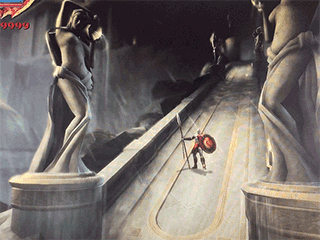
Kratos is searching for the truth of his past. He has been having recurring visions of his mother in his dreams. She beckons him to travel to Atlantis. Athena tries to convince him that those are just dreams. She warns that pursuing these visions may turn out to cause ruin. He goes anyhow, and his visions lead him here. He comes to the doors to the Temple of Poseidon. The god says if Kratos knows himself then he can discover the truth within.
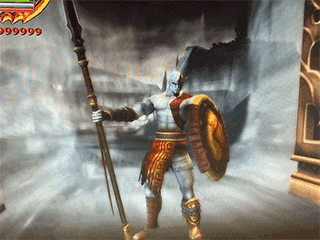
Kratos opens the door, and sees a vision of his past. He sees himself, and his younger brother Deimos training. Their mother Callisto calls them to their home. Kratos approaches slowly, not sure if the vision he sees is real. He goes to his mother, and she assures him that their reunion is happening. She is dying, but before she goes she tells Kratos that his brother is still alive, and held captive by Thanatos, the god of death. To help uncover the mystery of his kidnapping she says he must travel back to Sparta, and he would find the secret behind the throne of Ares. She apologizes for not telling him sooner. Before she passes she whispers who his father was, but in doing so she is turned into a hideous monster.
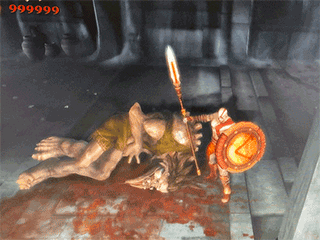
Kratos has to kill the creature, when he does she returns back to her human form. It was a short-lived reunion that only made the Ghost of Sparta more determined to get to the truth.
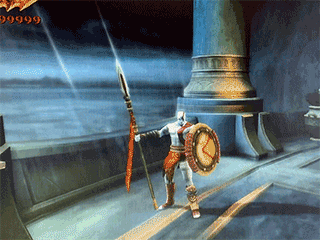
He continues through the temple, and discovers the source of its power. Embedded within a golden conch is a large pearl-like sphere that shoots electricity. It is called the Eye of Atlantis. It is the first magic attack that Kratos earns on his journey.
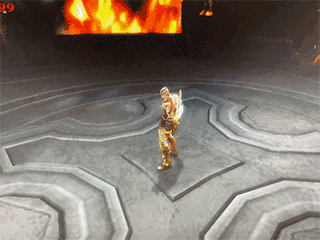
He doesn’t get very far before he is attacked by the Scylla, and taken to a cave inside the nearby Methana Volcano.
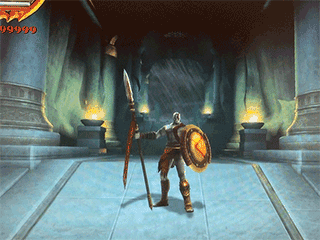
As Kratos is being dragged underwater we see a series of passages, tunnels, and supports that connect the City of Atlantis to the volcano. Once inside we are treated to one of the most stunning levels ever created for our hero.
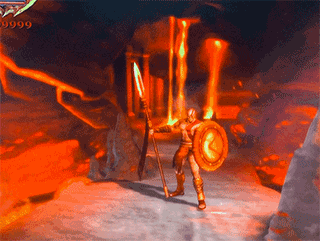
In the Chains of Olympus I mentioned that each stage was painted with specific colors. They helped us feel as if we had traveled to a completely new environment. The use of light, and color in Ghost of Sparta was every bit as good. In this case we went from the green hues of the stormy Mediterranean, to the blue, and gray tones of Atlantis, to suddenly the bright reds, yellows of the Methana Volcano. The inside of the volcano was not all wild, and chaotic. There were columns, and pillars holding up sections of the environment. Man-made tunnels led all throughout. There was not one corner of the stage that wasn’t just as breathtaking.
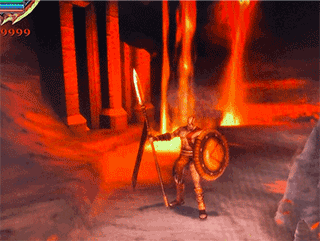
We could see gigantic
Archimedean screws diverting the lava flows from within the volcano into various aqueducts. A large mechanic named Lanaeus, and his men seemed to be in charge of keeping the volcano from erupting by diverting the pressure of the rising magma. The golden screws, and their mechanisms seemed to be made of a material that couldn’t be melted by the intense heat, and pressure.
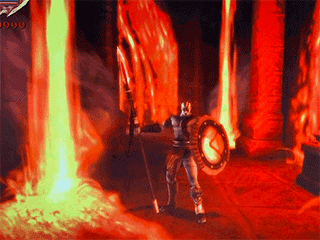
As Kratos made his way through the volcano he came across a gigantic door. He went through it and saw a titan was chained in a far wall.
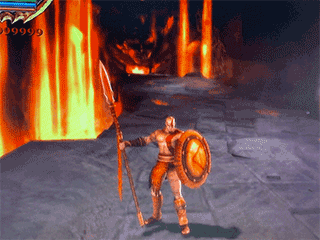
It looked like not all of the titans were bound in Tartarus. There was after Cronos who was crawling all over the Desert of Lost Souls in the original GoW. Then there was Typhon trapped within a mountain in GoW II. This new one was named Thera. She was a titan made of lava. She was possibly the one that controlled the core of the volcano. She told Kratos that it had been foretold that he would free the titans. She demanded that he liberate her then, and there.
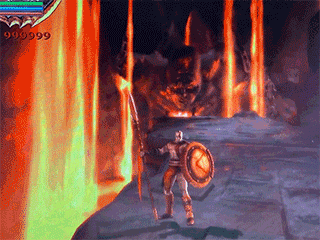
What he did instead was drain some of her power into the Blades of Athena. This allowed us to enable a new attack called Thera’s Bane where the chains, and blades became engulfed in fire. This did far more damage than his regular attacks, and could be used to break down walls, armor, and even the machines that were keeping the volcano from erupting.
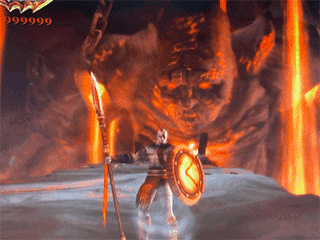
Thera began to howl in pain, and the ground began to break apart. Kratos left her chamber where he was spotted by Lanaeus. He protested the god of war’s actions, and send a large robotic Automaton to fight him. The robot broke apart thanks to the newfound Bane attacks. Kratos escaped several explosions, and falling rockslides within the volcano when he was then attacked once more by the Scylla. After defeating her the god of war made a dash to get out of the volcano before it exploded.
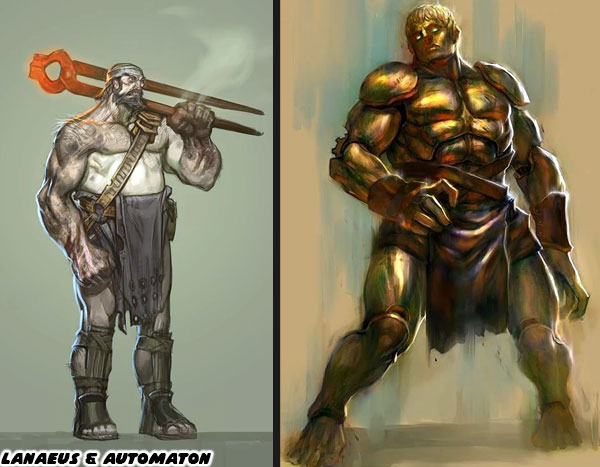
Kratos managed to reach the edge of the volcano when it erupted, and hurtled him across the bay. He landed in Crete a few miles away, and could see Atlantis collapsing in the distance. The first couple of chapters of the game had their teeth in me. Every minute of the adventure had me captivated. I needed to know what was going to happen next, I could not stop the adventure now. We’re going to look at what I consider the peak of the GoW series in the next blog. I hope to see you back for that. Did you ever play Ghost of Sparta? How do you think it ranks among the other games in the series? Let me know in the comments section please. As always if you would like to sponsor me
please visit my Patreon page and consider donating each month, even as little as $1 would help make better blogs and even podcasts!














































No comments:
Post a Comment